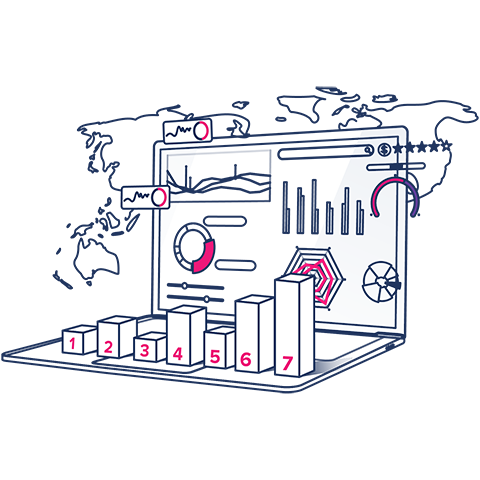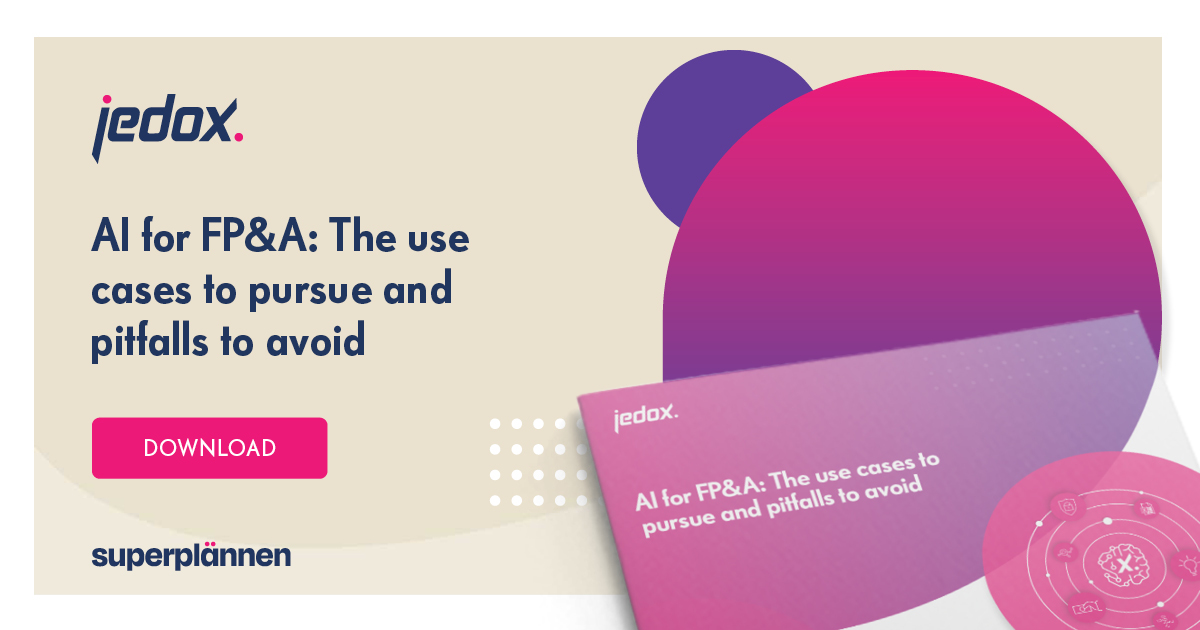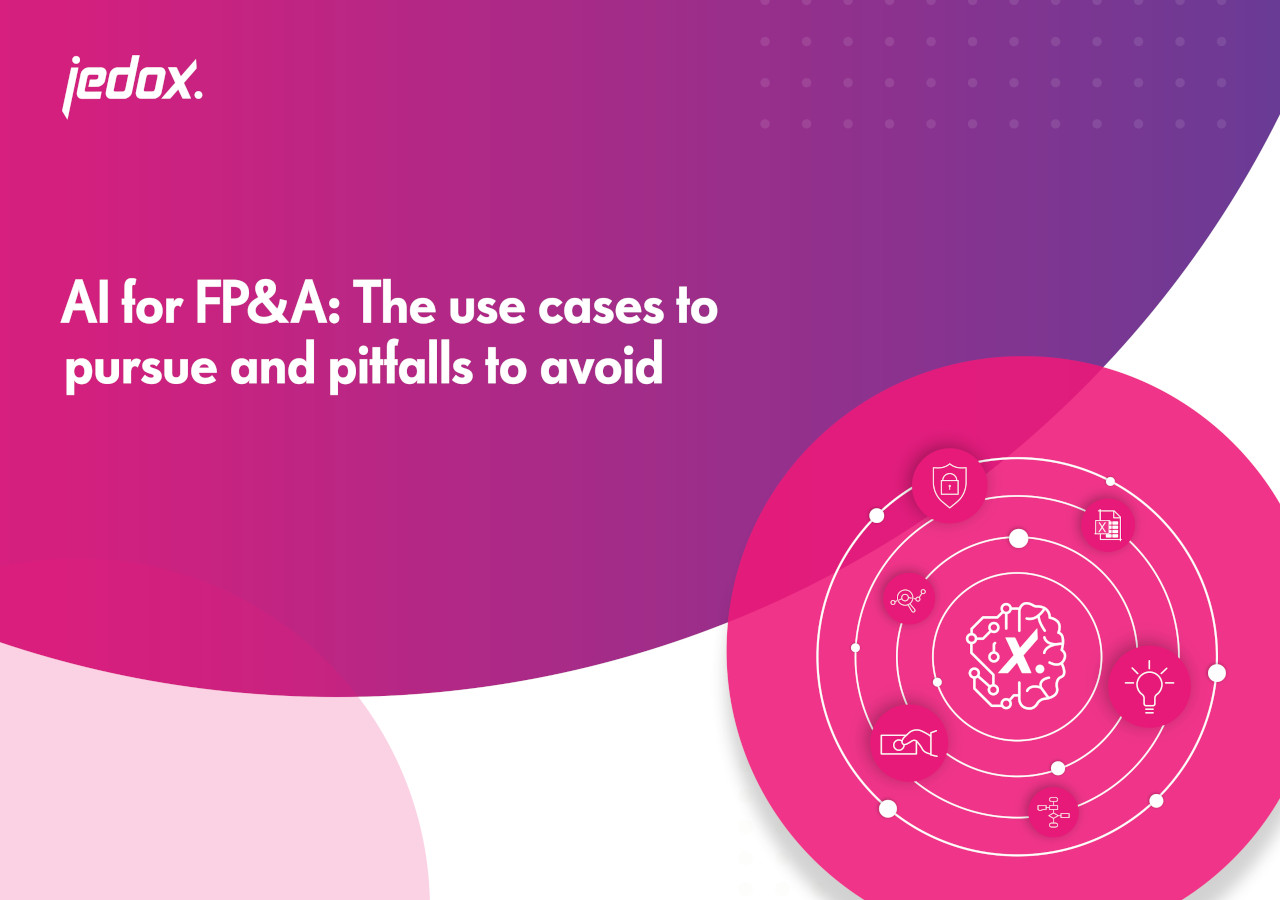
7 FP&A trends that can help you gain an advantage in 2025
- 1. GenAI and machine learning turbocharge analysis
- 2. Hyperautomation drives autonomous finance forward
- 3. Financial and operational driver-based planning
- 4. Self-reliant Finance teams support strategic business partnering
- 5. Increased scope and interconnectedness of responsibilities
- 6. Agility and adaptability in a VUCA world
- 7. Rapid expansion of information from a diverse data source ecosystem
- Drive success in 2025 with these 7 FP&A trends
Financial planning and analysis (FP&A) is rapidly transforming into a strategic powerhouse, enabling organizations to turn data into actionable insights and make smarter decisions in uncertain times. By combining financial expertise with cutting-edge technology, FP&A teams are unlocking new opportunities to thrive in today’s complex business landscape.
In 2025, innovation is driving FP&A forward. Artificial intelligence, including Generative AI (GenAI) and machine learning (ML), are uncovering hidden insights and making it easier to communicate, while hyperautomation is streamlining processes. These innovations make integrated financial planning an achievable and efficient method of providing a holistic view of business performance. Such advancements not only improve accuracy but also foster collaboration and adaptability in the face of constant change.
What FP&A trends will shape the financial landscape in 2025? How can they position your organization for success? Let’s explore the following seven innovations redefining the future of FP&A:
1. GenAI and machine learning turbocharge analysis
GenAI and ML are making a significant impact across industries, and FP&A is no exception. These technologies are reshaping how Finance teams analyze data and derive insights.
According to a recent Gartner survey, 58% of Finance functions started using AI in 2024—an impressive 21% increase from 2023. Moreover, Gartner predicts that by 2026, 90% of Finance functions will deploy at least one AI-enabled technology solution.
The growing adoption of AI, especially GenAI, highlights its potential to revolutionize Finance. By processing large datasets, AI and ML can identify key drivers, uncover patterns, make accurate predictions, simulate scenarios, and deliver insights that would otherwise take extensive time and effort to uncover manually.
In fact, another Gartner survey from 2024 found that 66% of Finance leaders see GenAI’s most immediate impact in explaining forecast and budget variances—a capability that enables faster, more precise analysis for Finance teams.
Within the FP&A landscape, platforms like Jedox are already leveraging GenAI to enhance productivity via AI-generated performance summaries, interactive charts, and DynaTables—which are pivot-style tools that make it easier for Finance teams to explore, interpret, and share insights effectively.
Despite some resistance to this shift, FP&A professionals have little to fear. AI technologies are mature and highly capable of supporting Finance functions with reliable, actionable insights.
2. Hyperautomation drives autonomous finance forward
Hyperautomation, the concept of automating every possible process within an organization, is transforming the Finance function. It saves time, enhances accuracy, and reduces the risk of human error. Hyperautomation also empowers teams to focus on high-value activities like strategic analysis and decision-making rather than repetitive, mundane tasks.
As data integration improves and technologies advance, the potential for automation continues to grow. Legacy systems and tedious processes, which once bogged down organizations, are being replaced by streamlined, automated workflows. This shift paves the way for a more agile, efficient Finance function that can adapt to its rapidly changing business environment.
A cornerstone of this shift is autonomous finance, where innovative technologies like AI, ML, and natural language processing (NLP) work together to automate financial tasks and evolve continuously by analyzing data. Central to this evolution is the rise of AI agents, which IBM defines as systems designed to observe, analyze, and take actions autonomously.
In the context of Finance, AI agents can detect patterns, identify discrepancies, and optimize workflows. For instance, they can predict cash flow needs, recommend budget adjustments, or trigger automated alerts for anomalies—acting as virtual assistants that enhance decision-making and operational efficiency.
Robotic process automation (RPA) further supports this ecosystem by handling repetitive financial tasks with precision and speed, while predictive analytics powered by AI enables better forecasting and trend identification. Together, these technologies streamline processes and help Finance professionals shift from hands-on operations to proactive, data-driven strategy.
The evolution from traditional bookkeeping to advanced AI-driven platforms, powered by tools like AI agents, represents a profound transformation. It’s a shift driven by the demand for speed, accuracy, and agility in financial operations.
Specifically, tools like Jedox support this transformation by integrating and automating financial and operational data—making it easier to connect systems, eliminate silos, and drive hyperautomation across Finance. And with the JedoxAI agent launched in 2024, organizations can further enhance decision-making by leveraging AI-driven insights, predictive analytics, and automation to streamline workflows and unlock new levels of efficiency.
3. Financial and operational driver-based planning
FP&A is expanding to integrate insights from across the organization—including Sales, Operations, and HR—to deliver a holistic view of performance, including non-financial performance related to ESG (environmental, social, and governance) topics. This approach enhances collaboration, aligns priorities, and empowers better, data-driven decisions.
In particular, integrating financial and operational planning ensures alignment between short-term actions and long-term goals. Financial plans provide the targets, while operational plans define the detailed activities required to meet them. Together, these elements create a clear path from strategy to execution. Without this integration, organizations risk inefficiencies and misaligned efforts.
Within this framework, scenario, driver-based planning makes financial and operational integration more agile and responsive:
- The scenario portion helps organizations prepare for uncertainty by modeling best-case, worst-case, and base-case outcomes. This allows teams to understand potential impacts, make informed decisions, and pivot quickly as conditions change.
- The driver-based portion connects key business drivers—such as sales volumes or input costs—to financial and operational outcomes. By focusing on these drivers, organizations can make dynamic, real-time adjustments to their plans.
Modern FP&A tools simplify these approaches—enabling teams to model scenarios, analyze outcomes, and align operational activities with financial and non-financial KPIs and targets. Features like automated workflows and side-by-side reporting ensure a seamless and efficient planning process.
In short, financial and operational driver-based planning transforms how businesses align their goals, navigate uncertainty, and adapt to change. By integrating these approaches, organizations can break down silos, improve decision-making, and stay ahead in a competitive environment.
4. Self-reliant Finance teams support strategic business partnering
The move toward user-centric FP&A tools will shift how Finance teams collaborate and drive decision-making in 2025. To better meet business user needs, modern solutions emphasize self-service capabilities—enabling them to update plans, run reports, and analyze results independently.
This approach reduces reliance on IT or external consultants, shortens cycle times, and makes systems more accessible to a broader range of users. Self-service planning relies on intuitive, no-code/low-code interfaces designed for non-technical users. By incorporating business-friendly terminology, guided workflows, and automation, these tools make it easier for users to focus on insights rather than processes.
Furthermore, Cloud-based platforms enhance usability by providing easy access from anywhere, removing the need for complex installations or technical expertise.
Designed with ease of use and accessibility at their core, user-centric tools enable business users to manage plans, forecasts, and analyses without relying on IT or external support. As user-centric tools become standard in the FP&A market, software like Jedox is already prioritizing Finance autonomy with an intuitive platform that fosters confidence, increases efficiency, and allows end-users to interact with systems independently—all while integrating seamlessly with familiar BI and analysis tools.
Most importantly, this evolution will support Finance teams in their role as strategic business partners—enabling them to collaborate effectively across departments and respond quickly to changing business needs.
5. Increased scope and interconnectedness of responsibilities
Increasingly, organizations are recognizing the value of integrating financial planning, financial consolidation, and ESG reporting into a unified framework. When planning and reporting data are no longer scattered across disconnected systems, businesses can achieve a single source of truth (SSOT)—a consistent, accurate reference point that ensures everyone in the organization is working from the same data.
This integration offers significant benefits, as an SSOT fosters collaboration and clear communication—enabling teams to make better, faster decisions. For many companies, this is especially important as the demands for financial consolidation and ESG compliance grow more complex.
Financial consolidation is a cornerstone of performance management, combining actual financial data from multiple entities into accurate, consolidated statements while eliminating intercompany transactions. This integration provides a clear view of group performance and ensures alignment between planning and reporting at the corporate level.
Beyond internal management reporting, financial consolidation also supports external regulatory requirements like statutory reporting, account reconciliation, and disclosure management—making it a critical capability for compliance and transparency in modern software solutions.
Furthermore, the addition of ESG reporting to financial planning and consolidation reflects the growing importance of sustainability metrics. Companies now need tools that not only integrate financial data but also incorporate ESG considerations into their planning and performance management. By aligning ESG targets with financial goals, organizations can meet regulatory requirements, track progress, and demonstrate their commitment to sustainability.
6. Agility and adaptability in a VUCA world
In today’s volatile, uncertain, complex, and ambiguous (VUCA) world, Finance teams face increasing pressure to adapt quickly to changing circumstances. The past few years have underscored the critical need for agility, with organizations striving to stay ahead by making faster, more informed decisions.
A key enabler of this adaptability is the use of an FP&A platform designed to handle dynamic, fast-paced environments. By adopting tools that support rolling forecasts, scenario modeling, and process automation, businesses can transition from reactive planning to proactive decision-making.
For example, rolling forecasts provide a continuous, up-to-date view of performance, while scenario modeling helps organizations explore potential outcomes and prepare for multiple futures. Automating manual processes ensures teams can focus on analysis and strategy, rather than being bogged down by repetitive tasks.
Crucially, faster planning cycles enable real-time feedback loops, empowering teams with the insights they need exactly when they need them—rather than waiting for end-of-month reports.
In a VUCA world, adaptability isn’t optional, it’s essential. With the right FP&A tools, organizations can embrace agility, stay resilient, and make confident, data-driven decisions—no matter what challenges arise.
7. Rapid expansion of information from a diverse data source ecosystem
Organizations thrive when they’re able to integrate data from diverse systems rather than being confined to a single vendor’s platform. An ecosystem-driven approach enables seamless data flow from operational and external sources—fostering adaptability and scalability.
Here, a digital twin can act as a virtual replica of an organization’s financial and operational dynamics, consolidating data from multiple systems into one cohesive model. This allows for scenario simulation, key driver analysis, and the exploration of interdependencies across the ecosystem. By leveraging a digital twin, businesses can align planning and decision-making with real-time, actionable insights.
Solutions like Jedox support this flexibility by integrating with enterprise resource planning (ERP) systems, business intelligence (BI) tools like Power BI, and other data sources. This ensures AI-powered planning, driver-based modeling, and scenario analysis remain robust and comprehensive—free from the limitations of closed platforms.
Focusing on ecosystems ensures organizations can adapt to change with greater precision and thrive in complex, interconnected environments. By integrating data seamlessly across systems, ecosystems address the challenge of data proliferation across the enterprise by consolidating insights into a unified framework.
This approach enables maximum efficiency with both people and resources—fostering smart growth and empowering businesses to do more with less in a volatile environment.
Drive success in 2025 with these 7 FP&A trends
In 2025, FP&A teams must embrace innovation to stay ahead. Technologies like Gen AI, hyperautomation, and digital twins will transform planning and decision-making—while integrated financial planning, ESG alignment, and scenario modeling will ensure agility and resilience.
By leveraging ecosystems and seamless data integration, FP&A teams can lead with clarity and empower their organizations to thrive in an ever-changing world.




